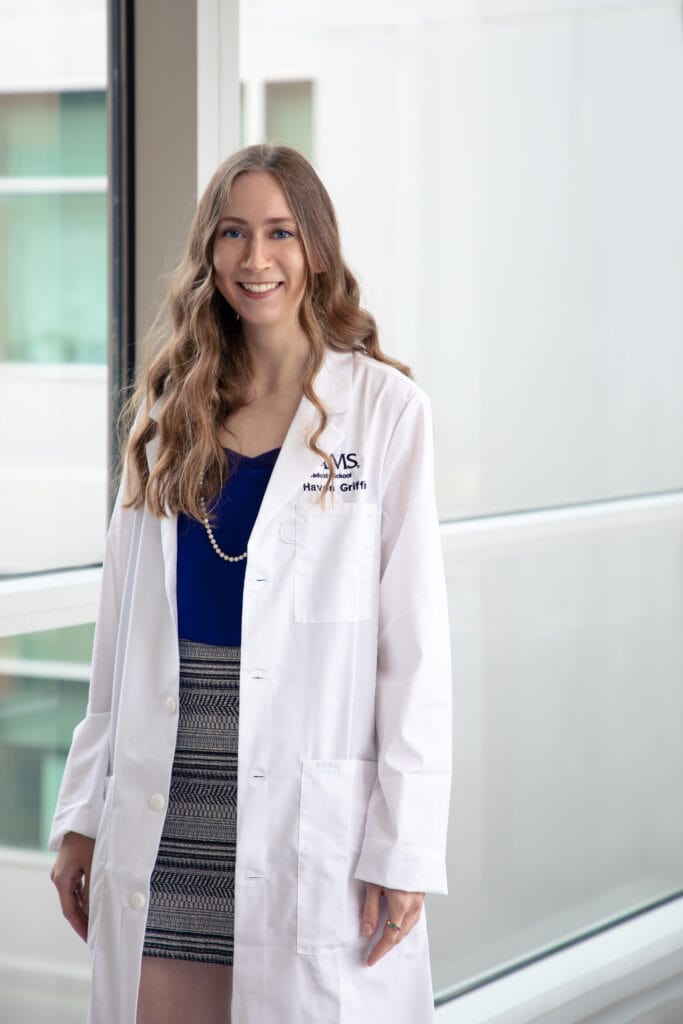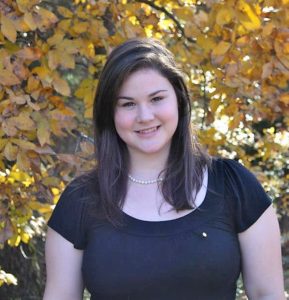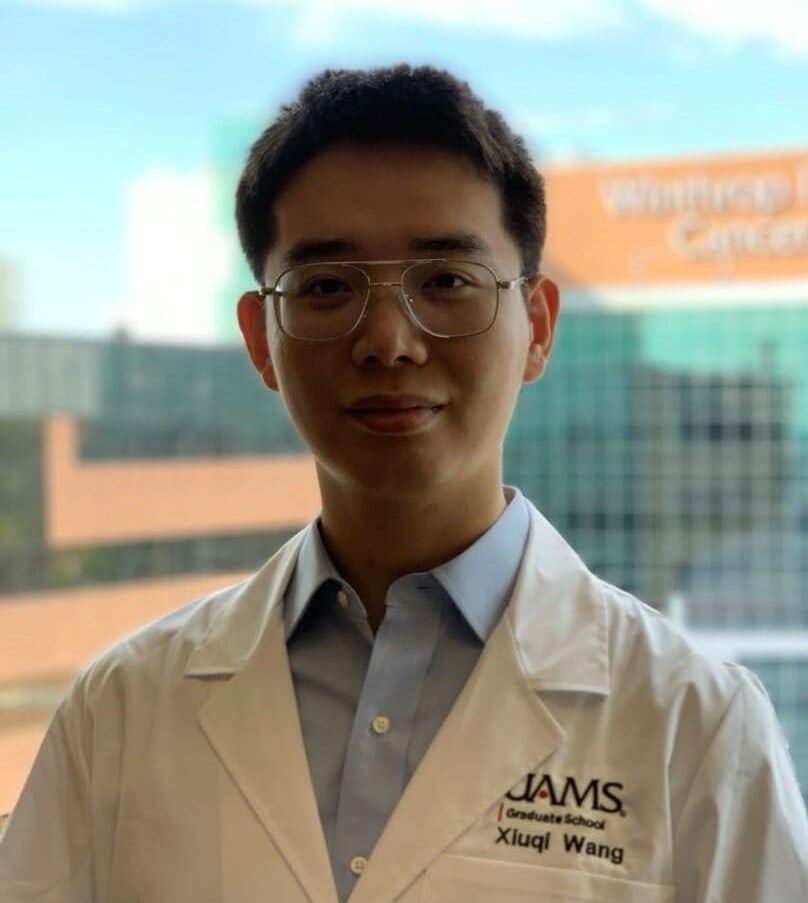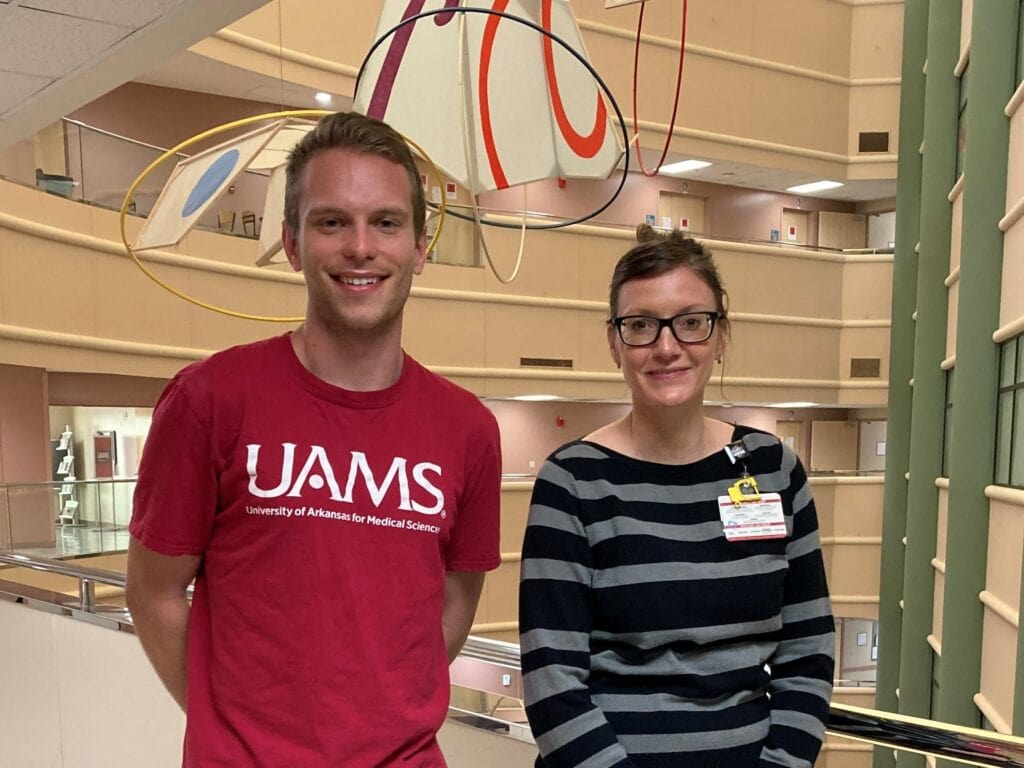
I am a fourth year student in Biochemistry and Molecular Biology
Education
Hendrix College – Bachelor of Arts in Neuroscience
Research
My research focuses on the melanocortin pathway in the brain which controls appetite, energy homeostasis, and glucose homeostasis. In this pathway, I am particularly interested in the function of the melanocortin 4 receptor (MC4R), a G protein-coupled receptor, and the effects of cholesterol loss on MC4R function. Brain cholesterol is mostly synthesized from within the brain as cholesterol in the periphery cannot cross the blood-brain barrier. Studies have found that cholesterol biosynthesis is decreased in the brain of Huntington’s Disease patients and in mouse models of Type 1 and Type 2 Diabetes. Using a drug called methyl-β-cyclodextrin (MβCD) to deplete cholesterol in a neuroblastoma cell line, I have found that cholesterol depletion impairs colocalization of MC4R with a vesicle-coating protein called clathrin and induces rapid desensitization of the receptor. Our lab is working to determine the mechanism of this desensitization and possible ways to restore MC4R function in a model of deficient brain cholesterol. In addition, to define the sub-cellular location of MC4R in a more physiological model, our lab expressed exogenous hemagglutinin-tagged MC4R (HA-MC4R) in primary neurons using Adeno-associated adenovirus type 2 (AAV2). We found that HA-MC4R was located both at the center and adjacent to post-synaptic sites containing ionotropic glutamate receptors, indicating that MC4R may be positioned to control glutamatergic signaling. My future research will determine how cholesterol depletion affects MC4R traffic and signaling at these sites.
Notable about her time as a Graduate
One of the first mini-projects that I had when starting graduate school was to subclone a plasmid encoding for a fluorescently-tagged G protein, Gs, which activates adenylyl cyclase. After several failed attempts and at least three months of work, I finally subcloned a plasmid that worked. Because of those failed attempts (and good record-keeping of what worked and what didn’t), I became better at subcloning and teaching others what I had learned.
Career Goals
In whatever research capacity I am involved in after the PhD, I want to continue studying neurobiology of the brain and pathology of neurodegenerative diseases and ageing and to identify possible therapeutics for improving brain function.
Experiment or technique you would most like to do
Electrophysiology—I have never done it but would like to some day!
Fun facts
I started figure skating when I was four years old, and when I’m not in the lab I am on the ice coaching my skating students.
Publications
- Trentzsch M, Nyamugenda E, Miles TK, Griffin H, Russell S, Koss B, Cooney KA, Phelan KD, Tackett AJ, Iyer S, Boysen G, Baldini G. Delivery of phosphatidylethanolamine blunts stress in hepatoma cells exposed to elevated palmitate by targeting the endoplasmic reticulum. Cell Death Discov. 2020 Feb 18;6:8.
- Nyamugenda E, Griffin H, Russell S, Cooney KA, Kowalczyk NS, Islam I, Phelan KD, Baldini G. Selective Survival of Sim1/MC4R Neurons in Diet-Induced Obesity. iScience. 2020 May 22;23(5):101114.
- Griffin H, Sullivan SC, Barger SW, Phelan KD, Baldini G. Liraglutide Counteracts Endoplasmic Reticulum Stress in Palmitate-Treated Hypothalamic Neurons without Restoring Mitochondrial Homeostasis. Int J Mol Sci. 2022 Dec 30;24(1):629.
Awards
2024 – Received first place for the Bhuvan Award for Excellence in Biochemistry Research at UAMS Student Research Day





